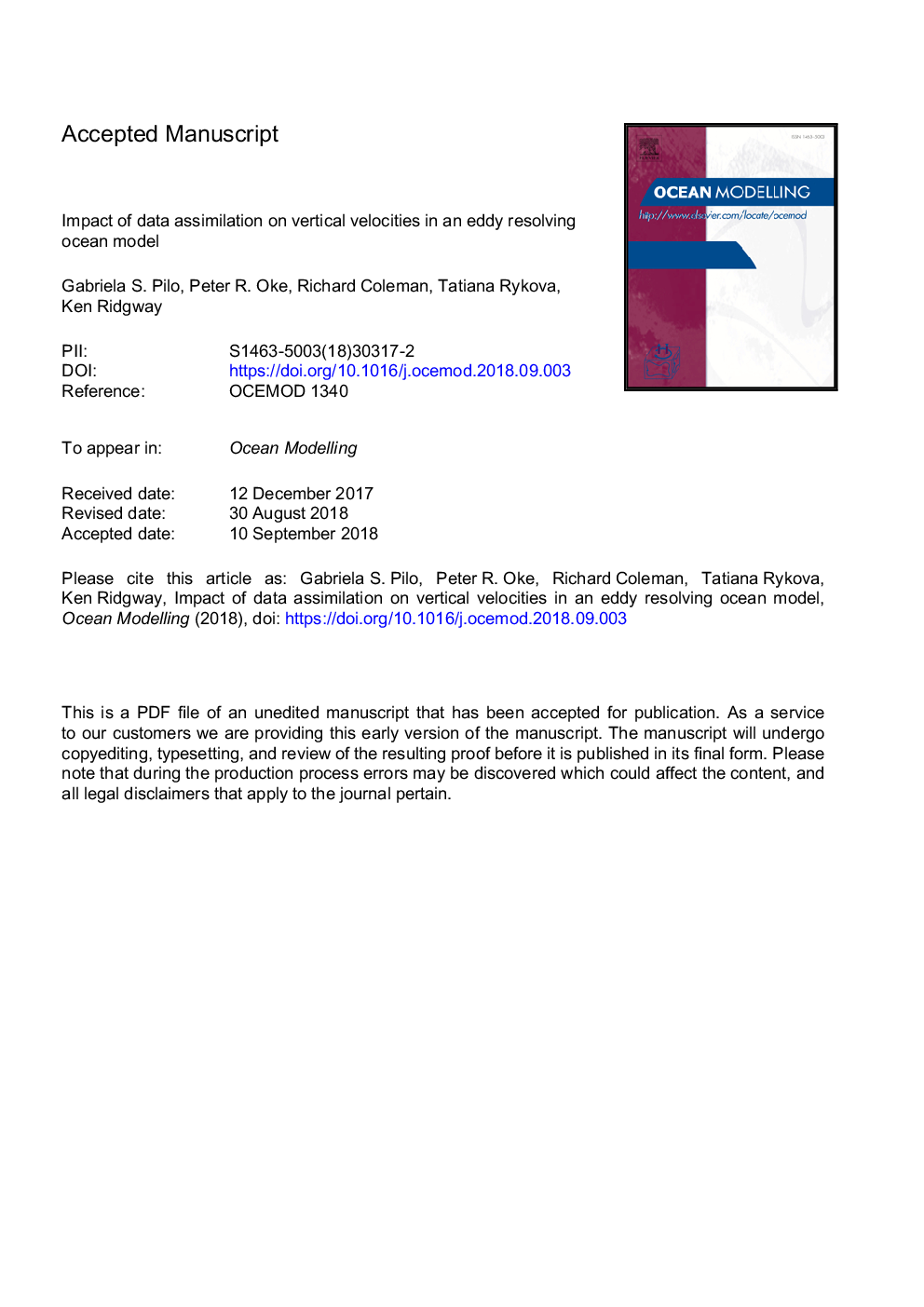| کد مقاله | کد نشریه | سال انتشار | مقاله انگلیسی | نسخه تمام متن |
|---|---|---|---|---|
| 10144867 | 1646316 | 2018 | 46 صفحه PDF | دانلود رایگان |
عنوان انگلیسی مقاله ISI
Impact of data assimilation on vertical velocities in an eddy resolving ocean model
ترجمه فارسی عنوان
تاثیر سازگاری داده ها در سرعت های عمودی در مدل اقیانوس حل و فصل
دانلود مقاله + سفارش ترجمه
دانلود مقاله ISI انگلیسی
رایگان برای ایرانیان
موضوعات مرتبط
مهندسی و علوم پایه
علوم زمین و سیارات
علم هواشناسی
چکیده انگلیسی
It is expected that the assimilation of data in an ocean model disrupts the model's dynamical balance. This disruption occurs because the analysis fields are not a precise solution to the equations of the model. Therefore, the model adjusts to the applied increments. With this limitation in mind, we assess the impact of sequential data assimilation (DA) on vertical velocity - chosen because of its sensitivity to model dynamical balances. We investigate vertical velocity within mesoscale eddies in the Tasman Sea and off Tasmania, Australia in an ocean reanalysis that assimilates observations every four days. In a free-running model, with no DA, ocean eddies often show a coherent pattern of alternating upward and downward cells. These cells are induced by eddy distortion (i.e., the eddy becoming more or less isotropic). In this study, we aim to first determine if a data-assimilating model can reproduce these alternating upward and downward cells; and then to investigate how the cells are affected by sequential DA. We view this study as a step towards better understanding the suitability of data-assimilating ocean models for detailed analysis of ocean circulation and ocean dynamics. We show that the vertical velocities are typically two times larger in magnitude on the day after assimilation, compared to subsequent days. Despite the model adjustment, the alternating upward and downward cells are present in the data-assimilating model. In fact, we find that the model adjustment acts like an artificial eddy distortion on the first day after assimilation - when the model is adjusting to the applied increments - amplifying the vertical velocities within the eddies. This artificial distortion impacts temperature and salinity, through vertical advection. The vertical advection terms are about 1.5 times higher on the day after assimilation, compared to other days. The temperature and salinity changes resulting from the stronger vertical advection are mostly 2-10 times smaller than the increments of these properties applied during assimilation. Our findings suggest that a data-assimilating model may be useful for investigating the detailed dynamics of the ocean, but care should be taken when interpreting results. Moreover, we suggest that it is prudent to disregard the model's fields within the first day after assimilation - particularly in analyses of dynamical balances.
ناشر
Database: Elsevier - ScienceDirect (ساینس دایرکت)
Journal: Ocean Modelling - Volume 131, November 2018, Pages 71-85
Journal: Ocean Modelling - Volume 131, November 2018, Pages 71-85
نویسندگان
Gabriela S. Pilo, Peter R. Oke, Richard Coleman, Tatiana Rykova, Ken Ridgway,
